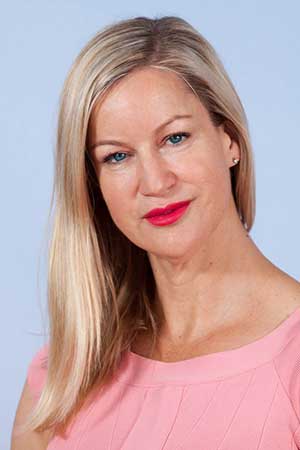Tracey Shirtcliff, founder and CEO of The Virtu Group, maker of the adtech tool Scope, the scope of work and budget management tool that helps brands and agencies budget better-using data, is someone who can accurately be described as a serial entrepreneur. In 2004, the New Zealand native who grew up on a farm founded the high-tech traffic software company, Sohnar, used by agencies worldwide and winner of the coveted Queens Award for Innovation. Ten years later the company was acquired, and Shirtcliff launched The Virtu Group and its signature product, Scope.
 Now, at the end of the year, brands and advertising agencies are planning their marketing spend and scopes of work. AW360 spoke with Shirtcliffe about how to navigate 2021 budgeting, surmount its challenges, and be poised for success in the new year.
Now, at the end of the year, brands and advertising agencies are planning their marketing spend and scopes of work. AW360 spoke with Shirtcliffe about how to navigate 2021 budgeting, surmount its challenges, and be poised for success in the new year.
Q: What led you to develop Scope?
TS: Over the years sitting with many C-level executives the consistent refrain was around losing money on some projects and jobs. Why? It was the estimates or fee proposals that were wrong – so we went in search of fixing that problem. The scope was born to help agencies and consultancies better price the work they do. We developed taxonomy and used data from nearly 1,000 agencies to solve this problem. We built an enterprise-level tool that simply helps you sell what you are doing – not the people who are doing it.
Q: Give us an overview of the biggest concerns around scope and budgeting. What historically have been the industry challenges in this area and what have been the solutions?
TS: Scopes are traditionally created by a senior team within an agency with specialist knowledge and experience, meaning expensive and time-consuming. There’s no consistency and they’re often inaccurate – especially if scoping something for a new discipline, market, or sector. They will be guessing – as there is nothing for them to leverage – no industry data for them to use to help. Most often, agencies look at what the client paid last time or is likely to accept, rather than the price that truly reflects the work they are doing. This is unfair to both parties – the lack of clarity can lead to over-servicing by the agency; and/or work being produced and paid for that is no longer required by the client due to changes in corporate aims, etc.
On the brand procurement side, marketers are being asked to do more with less – to look beyond the obvious cuts. Their challenge is to maintain or exceed aggressive growth goals without an increase in budget/headcount. So it’s all about increasing efficiency and effectiveness – something procurement professionals are adept at. But critical to doing this is understanding what is being spent in different categories, by whom, and with whom. This information is surprisingly difficult to obtain due to the volume and complexity of spend.
Q: It’s the last fiscal quarter of 2020 and companies are planning marketing budgets for 2021. Taking the 30,000-foot view with everything that happened this year, what should brand advertisers and agencies be thinking about as they scope their marketing costs? What’s different now than pre-pandemic?
TS: The pandemic has revealed the cracks in scoping practices. At present, SOWs [statement/scope of work] are created and almost immediately are out-of-date and side-lined as they bear no connection with reality. This then makes tracking deliverable spend estimates to actuals nearly impossible. SOWs need to be active, living documents that track changes throughout their lifecycle. The issue with this is its accessibility. SOWs, MSA [Master Service Agreements], SLAs [service-level agreement], and change requests are generally kept in separate documents on individual drives. Now more than ever companies require a single view or one place where the information, and versioning thereof, is accessible to all stakeholders and it should all be 100 percent in the cloud – one accessible place and provide permission to access to all that require it. This will make Fall planning seamless and efficient.
Q: You distinguish between budgeting for brands and budgeting for procurement officers on the brand side. Can you clarify that? How is it different?
TS: Cleansing data is tricky and time-consuming. In addition, spend categorization has proved difficult. While marketers typically categorize by the marketing mix, product or campaign, procurement teams usually categorize by market-facing spend categories – they need to align on categorization and agree on which spend is addressable and can be sourced more efficiently. To do this, procurement professionals have needed to improve their understanding of marketing spend so they can take a more nuanced approach rather than one-size-fits-all.
For example, for commoditized items such as print, they can optimize through a competitive bid process, but for creative categories such as agency fees, they need a sourcing process that benchmarks hourly rates against market rates and an understanding of what is being delivered and the time it takes, along with the rates, in order to compare ‘apples with apples’. With respect to addressable spend, procurement, teams need to know which are pass-through costs as there are no efficiencies to be made on this type of spend. Aligning marketing and procurement brings success to both parties and the organization, ie. efficiencies generated can be re-invested in brand growth and procurement gain credibility as a strategic value-driving function. Win-win.
Q: So, what’s the future for scoping and budgeting look like, and how does it address the challenges to date?
TS: Agile, accurate scoping is the future. Scopes-of-work and pricing need to reflect the work and value being delivered for both parties to get a fairer deal and for trust to return. By enabling collaboration and digitizing records of scopes, approvals and changes can be quickly compared, tracked, analyzed it lifts the game for both parties. It’s with this consistency of process and a shared taxonomy that ROI can be measured and everyone can create a far more efficient process that enables creativity to flourish.

